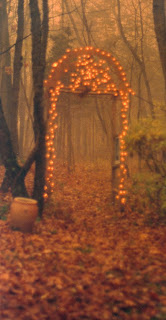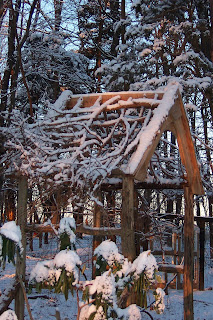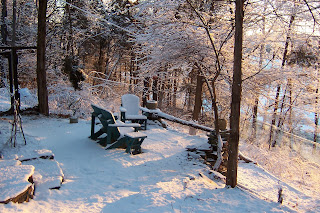Arbors: Style and Placement

This is Dan’s first arbor, an earlier version of the one pictured in the previous post. While I’m not crazy about the use of twinkle lights in the garden, here they lent an ethereal air to the forest and served a practical purpose, as well: A night light for the doggy relief area during those late nocturnal and early morning runs. Choosing an arbor that is in harmony with the architectural style of the house and the landscape style of the garden, and siting it appropriately, are crucial to having it integrate well into its surroundings. While budget is an issue for many gardeners, as is not having a live-in arbor-artist, there are still many choices available ready made, or with only “some assembly required.” Smooth, unfussy surfaces and sleek styling go well with contemporary, modern, or mid-century homes; ornate curlicues and botanical themes with cottages, farmhouses, and Victorians. Unpeeled logs or rough-sawn boards are good choices for a rustic look. If you are fortunate...


